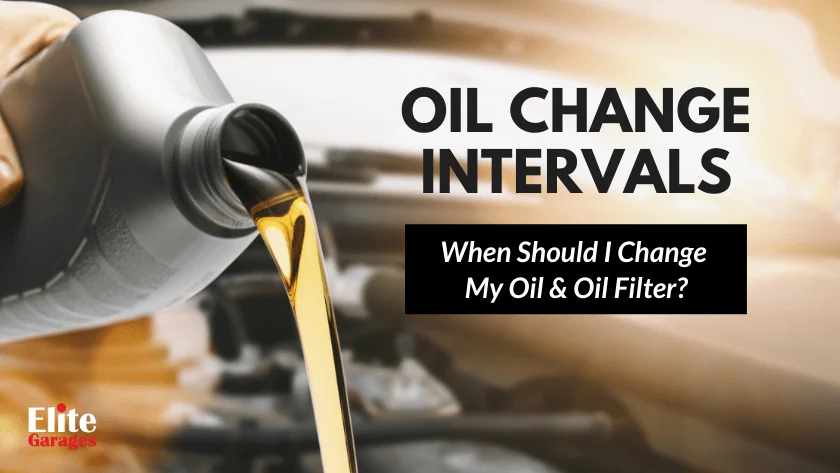How Often Do You Really Need To Change Oil

The question of "How often do you really need to change your oil?" has plagued drivers since the dawn of the internal combustion engine. For decades, the mantra was a rigid "3,000 miles," a figure often based more on marketing than genuine engineering necessity. Today, that number feels increasingly archaic, a relic in the face of rapidly evolving automotive technology. But what's the *real* answer now, and, more importantly, where is this all heading?
The Internal Combustion Engine (ICE): A Shifting Landscape
For traditional ICE vehicles, the answer is nuanced and increasingly dependent on several factors. Modern synthetic oils are far superior to their mineral-based predecessors, offering enhanced protection against wear, higher temperature resistance, and better viscosity control. This, coupled with improved engine designs boasting tighter tolerances and more efficient combustion, allows for extended oil change intervals. Most manufacturers now recommend intervals between 5,000 and 10,000 miles, but even these figures can be conservative depending on driving habits.
The rise of sophisticated engine monitoring systems plays a crucial role. These systems analyze factors like driving style (city vs. highway), engine load, temperature, and even oil condition itself. They use complex algorithms to determine when an oil change is actually required, often pushing intervals even further. However, it’s critical to heed the warnings and recommendations of these systems. Ignoring them can lead to accelerated engine wear and costly repairs down the line. Pay attention to your car's onboard diagnostics.
Of course, certain driving conditions still warrant more frequent changes. "Severe driving" – which includes stop-and-go traffic, extreme temperatures, towing, and dusty environments – puts significantly more stress on the engine and oil. In these situations, sticking closer to the lower end of the recommended range is prudent.
The Electric Vehicle (EV) Revolution: A Paradigm Shift
The electric vehicle revolution is drastically altering the landscape of automotive maintenance. EVs, of course, don't require engine oil at all. This eliminates the entire oil change paradigm, a significant benefit for consumers in terms of cost savings and reduced environmental impact. However, EVs have their own unique maintenance requirements. Coolant systems for batteries and electric motors require periodic attention, and lubricating the drivetrain components remains essential.
While EVs eliminate the need for oil changes, don't assume they're maintenance-free. Battery health, tire wear (often accelerated due to instant torque), and brake maintenance (potentially reduced due to regenerative braking) become the new focal points. Furthermore, the long-term durability of EV components and the availability of specialized EV technicians are areas that require continued development and investment.
Hybrid Systems: Bridging the Gap
Hybrid vehicles present an interesting middle ground. While they still utilize an ICE, the electric motor assists the engine, reducing its workload and potentially extending oil change intervals. Furthermore, regenerative braking reduces wear on traditional brake components. However, the engine still experiences stop-and-go cycles and may operate under varying loads, so oil monitoring systems are especially important in hybrid vehicles. They are designed to optimize oil change intervals based on the specific usage patterns of the hybrid system.
Smart Automotive Solutions: The Future of Maintenance
The future of automotive maintenance is intertwined with the rise of smart automotive solutions. Connected cars, equipped with an array of sensors and communication capabilities, are poised to revolutionize how we approach vehicle maintenance. These vehicles can proactively monitor component health, predict potential failures, and even schedule maintenance appointments automatically. Imagine a world where your car alerts you to a problem *before* it becomes a major issue, minimizing downtime and maximizing vehicle lifespan.
Furthermore, advances in AI-powered diagnostics will enable technicians to quickly and accurately identify issues, reducing diagnostic time and improving repair efficiency. Over-the-air (OTA) updates can also address software glitches and optimize vehicle performance remotely, further minimizing the need for physical visits to a service center. This proactive and data-driven approach represents a significant shift from reactive maintenance to preventative care.
Challenges and Considerations
Despite the optimistic outlook, several challenges remain. The widespread adoption of advanced monitoring systems requires standardization and cybersecurity measures to protect driver data and prevent malicious tampering. Furthermore, ensuring that independent repair shops have access to the necessary data and tools is crucial to maintaining a competitive and equitable repair market. The cost of advanced technologies and the potential for increased vehicle complexity are also factors that need careful consideration.
A Visionary Note
Ultimately, the future of oil changes – and automotive maintenance in general – is one of intelligent, proactive, and sustainable practices. We're moving towards a world where vehicles are not simply machines to be maintained, but intelligent partners that actively communicate their needs and optimize their performance. The days of arbitrary maintenance schedules are fading, replaced by a data-driven approach that prioritizes efficiency, longevity, and environmental responsibility. Soon, the question won't be "How often do I *need* to change the oil?" but rather "How can I ensure my vehicle operates at peak performance with minimal environmental impact, maximizing its lifespan and my enjoyment on the road?" The answer, guided by smart technology and a commitment to sustainable mobility, is closer than you think.
